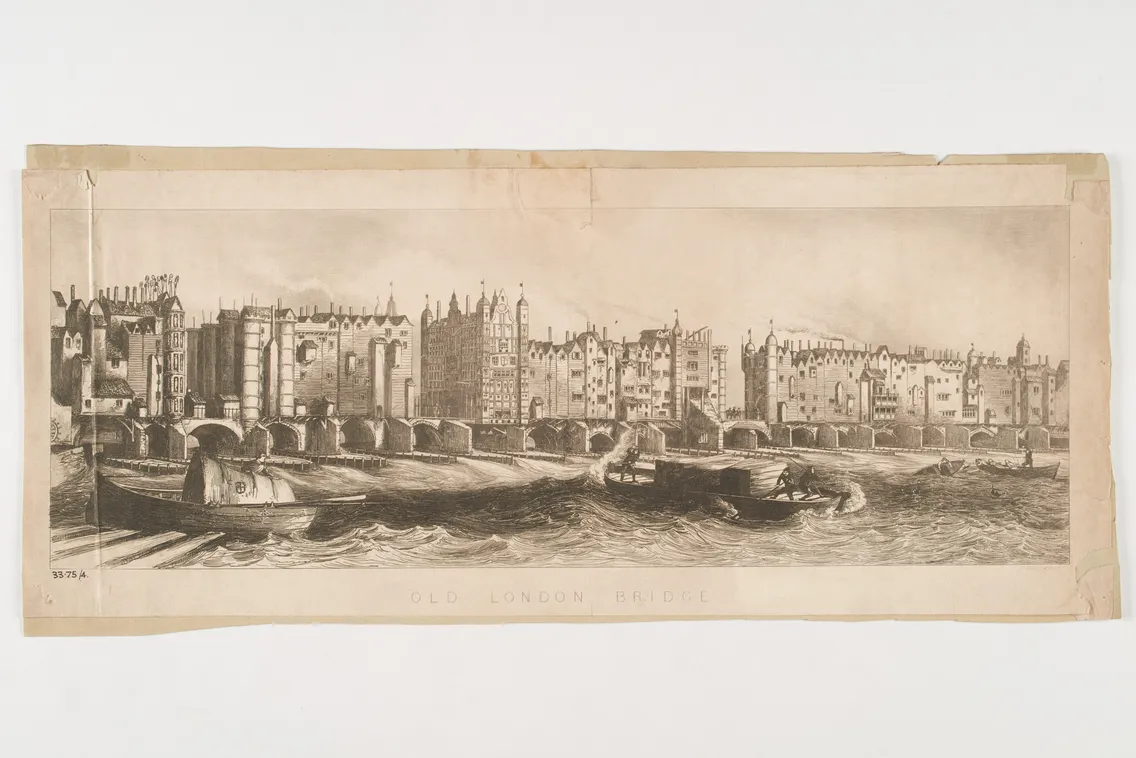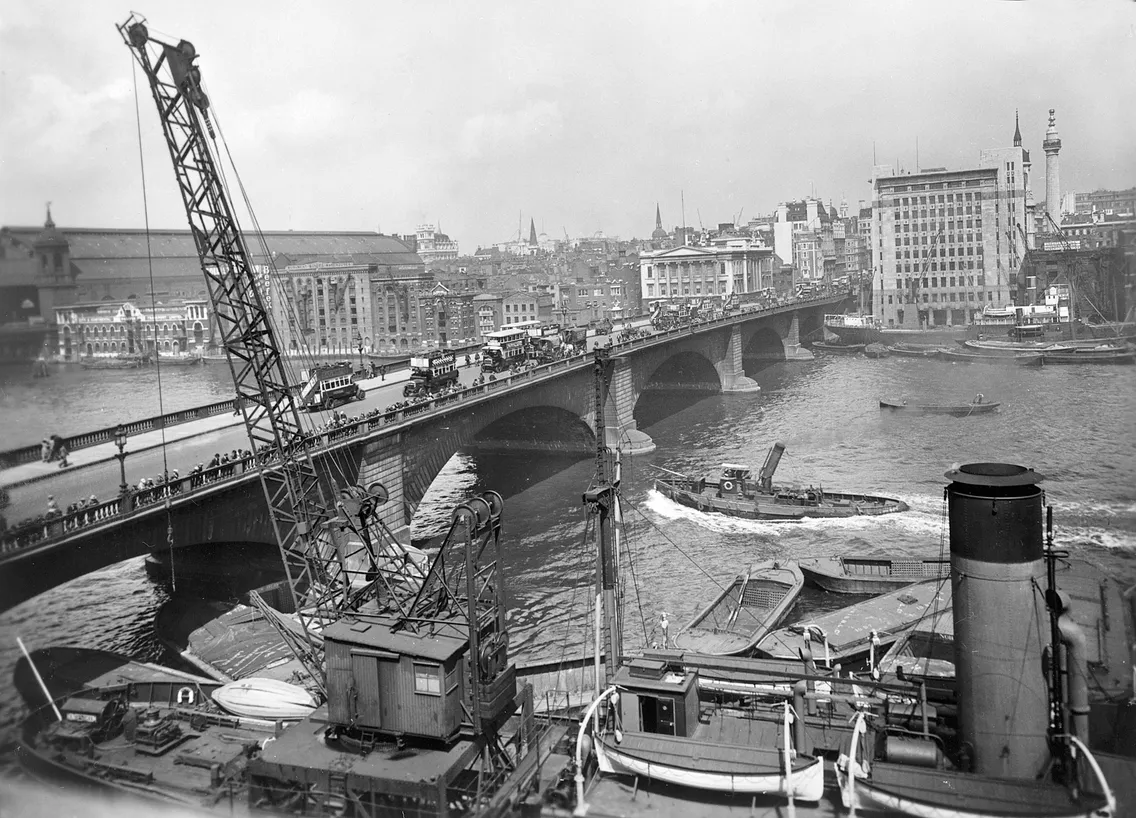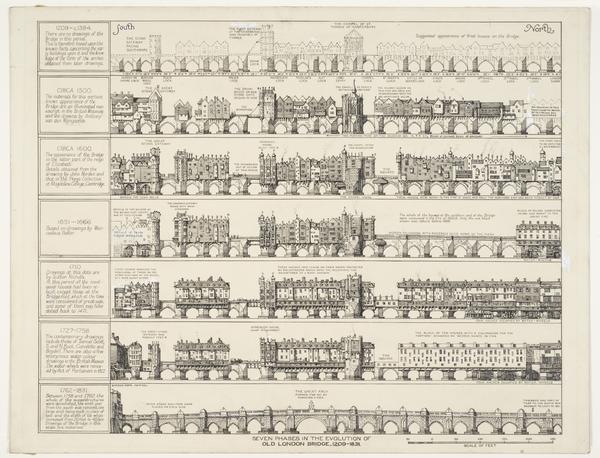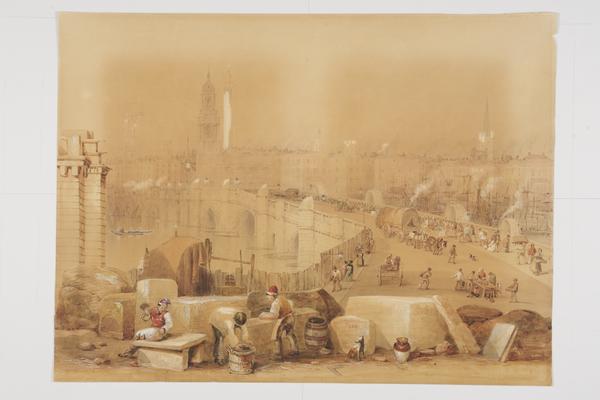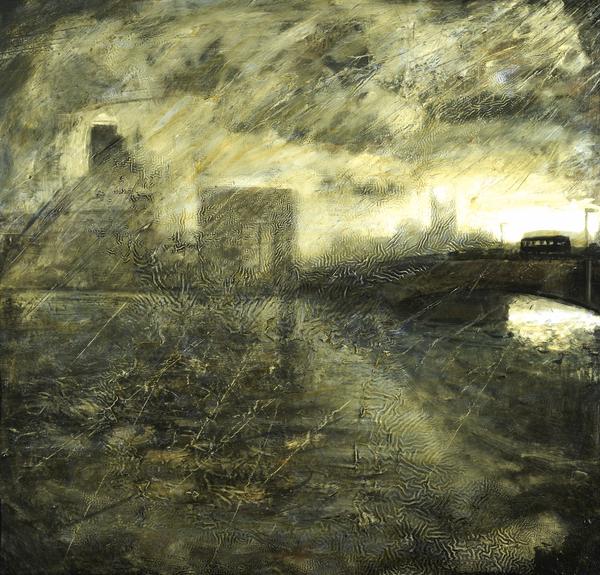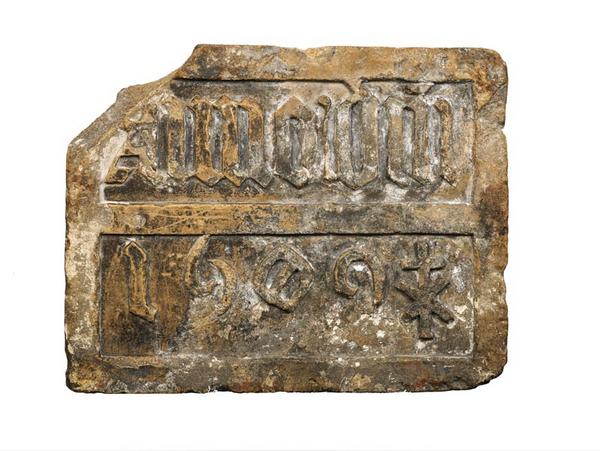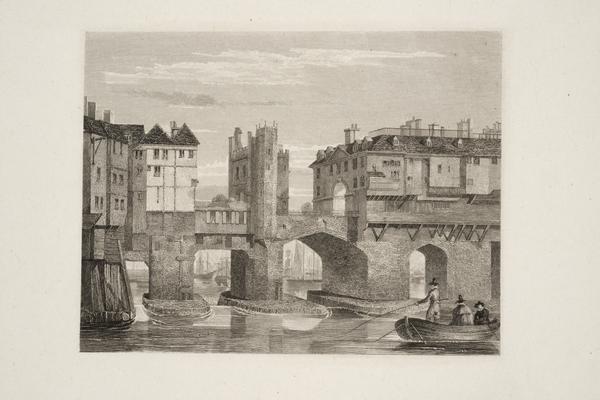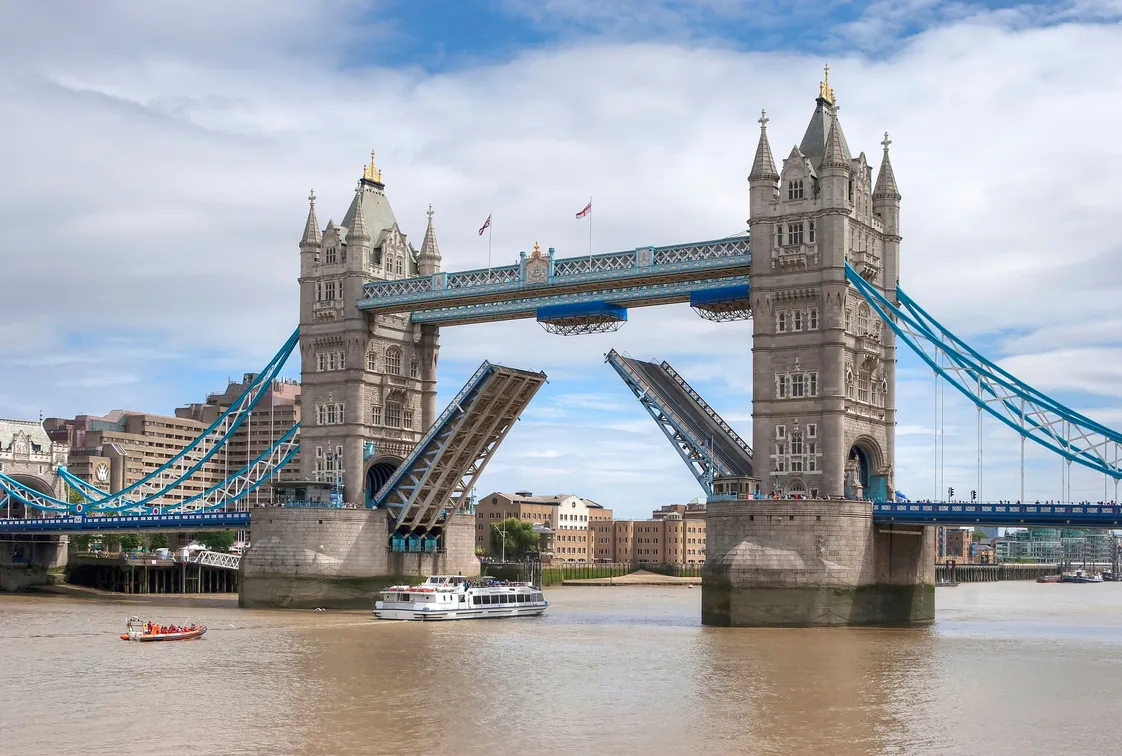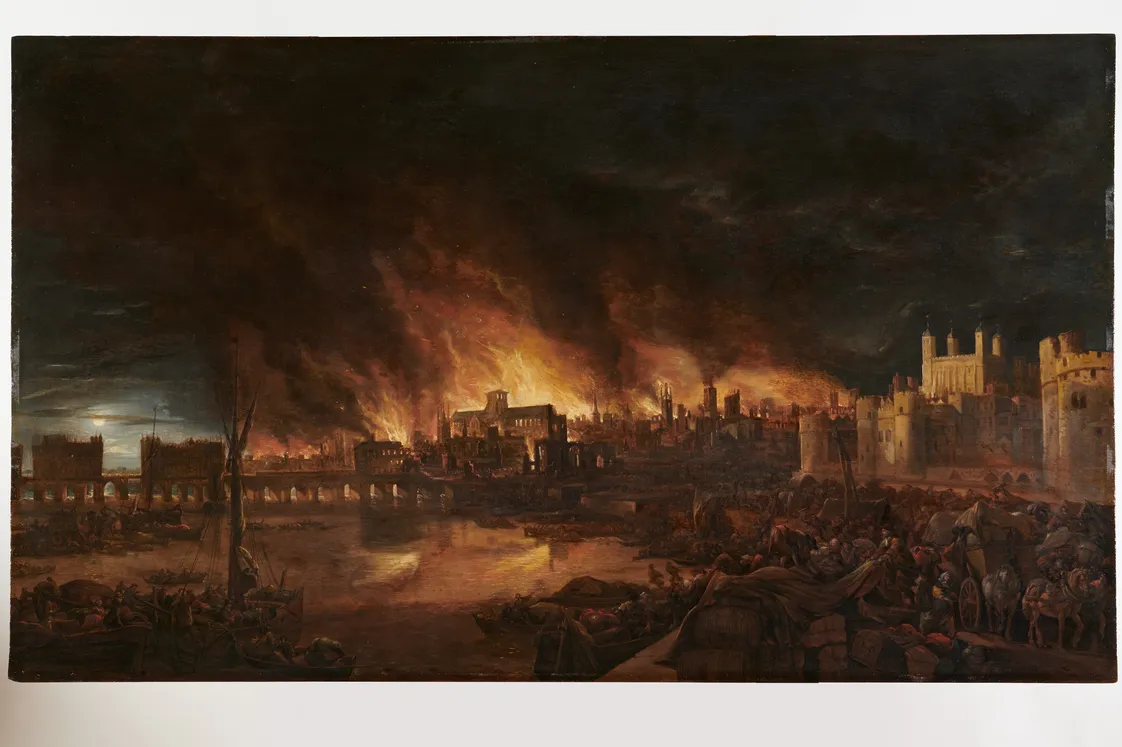London Bridge
First built by the Romans, London Bridge’s 2000-year-long history takes in fire, frost, trade, executions and many, many different rebuilds.
City of London & Southwark
Since the first century CE

Rush hour on London Bridge.
The city’s only river crossing for hundreds of years
Almost as long as there’s been London, there’s been London Bridge.
A crossing near its current site between the City of London and Southwark has existed since the Roman settlement of Londinium from around 47 CE. But the bridge itself has been destroyed, damaged and rebuilt a number of times near the original Roman site.
Several versions were made of timber, others were made of stone. One London Bridge had houses on it – as well as the heads of executed criminals stuck on poles near its gates.
But throughout its history, it's been a key line in London’s defences, a gateway to trade, an inspiration for artists and a vital artery of the ever-expanding capital.
London Bridge is falling down...
There’s some truth behind the English nursery rhyme London Bridge is Falling Down, whose lyrics date back to at least the 1600s. Yes, London Bridge has never just fallen down – but it’s been brought down by many other means.
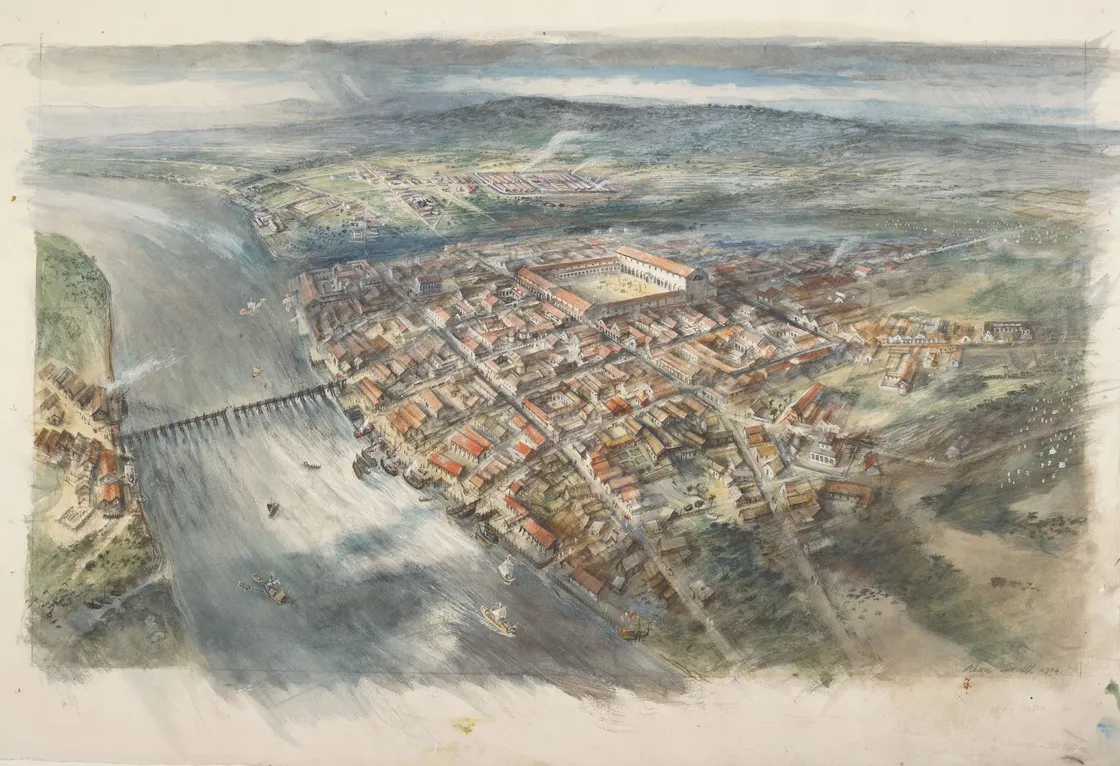
Roman Londinium.
The Romans abandoned London around 409 CE, leaving the walled city unoccupied for hundreds of years. The Saxons moved into the city ruins in the ninth century and built a new timber bridge by 1000. But wood, as you can imagine, wasn’t the sturdiest of materials. The bridge had to be rebuilt many times. It was destroyed by a storm in 1091, a number of fires and ice damage caused by the Thames freezing over.
The first stone bridge was completed in 1209 and featured fortified gates, towers and a drawbridge. Commonly referred to as Old London Bridge, it stayed in place for around another 600 years. It’s been run and maintained by the City Bridge Foundation, previously known as Bridge House Estates, ever since. But it was often in a state of disrepair, plagued by fire, ice and a drawbridge that had to be replaced multiple times.
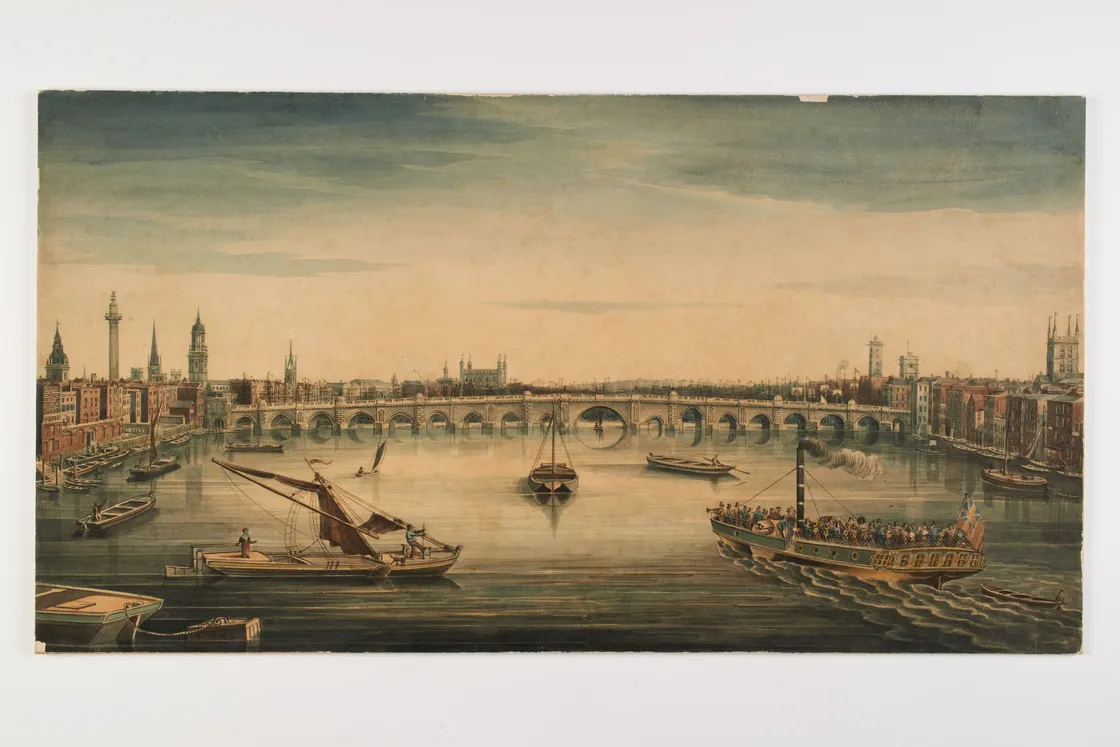
Old London Bridge.
Still, it managed to survive the Great Fire of London in 1666. The blaze started near the north of the bridge on Pudding Lane. A previous major fire in 1633 had destroyed a section of the bridge and created a gap. This acted as a firebreak and prevented the flames from ripping through to the south of the river.
A key feature in the defence of London
London Bridge has been a key feature in the defence of London since the Romans. By blocking the river, it could protect the city from attacks by ships and by forces advancing from the south. And as London’s only river crossing until Westminster Bridge opened in 1750, it also played a vital role in the flow of trade in and out of the city.
People lived, worked and worshipped on London Bridge for centuries. Old London Bridge was built with a chapel dedicated to Thomas Becket, the archbishop who was made a patron saint of London after his murder in 1170. There were so many houses, businesses and inns that you might have turned onto it and thought you were on any other London street. It was the longest inhabited bridge in Europe, a marvel of the medieval world.
“Used for the gruesome display of the heads of traitors”
From around the 14th to the 17th century, you could also see the gruesome display of the heads of traitors – preserved in tar and impaled on wooden poles – lining the bridge as a warning to arrivals. Scottish knight William Wallace, rebel leader Wat Tyler and English chancellor (and Henry VIII’s enemy) Thomas More were among those who met this fate.
From Old London bridge to London Bridge today
By the 1800s, houses were removed from Old London Bridge and the carriageway was widened. But the bridge was still congested and costly to maintain. Scottish engineer John Rennie designed a wider bridge with stone arches, which opened in 1831. By 1832, the demolition of Old London Bridge was complete.
Rennie’s bridge was heavily used. Despite being widened again in the 1920s, it still couldn’t quite handle the traffic of the mid-20th century. The 32 metre-wide concrete London Bridge we have today, built directly over the foundations of its predecessor, opened in 1973.
Connections: City of London & Southwark
London Bridge runs south onto Borough High Street in Southwark. This road was lined with inns serving people travelling to and from the city for centuries. You can still grab a drink at the George Inn, the city’s only surviving coaching house, today. Borough Market and the 800-year-old Southwark Cathedral are also nearby.
On the north of London Bridge is the City of London. The arch beneath the tower of Church of St. Magnus The Martyr, founded in the 11th century, was once the pedestrian entrance to Old London Bridge. After the church was destroyed in the Great Fire of London, it was rebuilt by architect Christopher Wren. Wren’s Monument to the Great Fire of London stands nearby.

